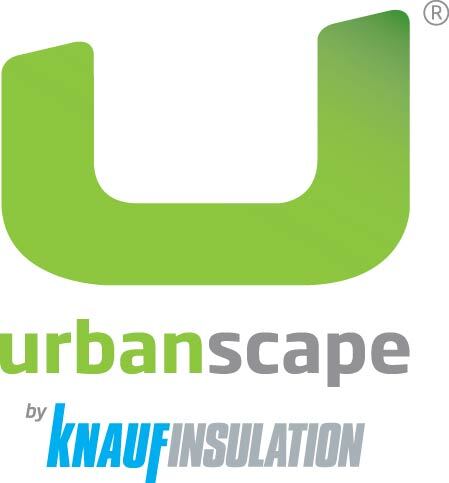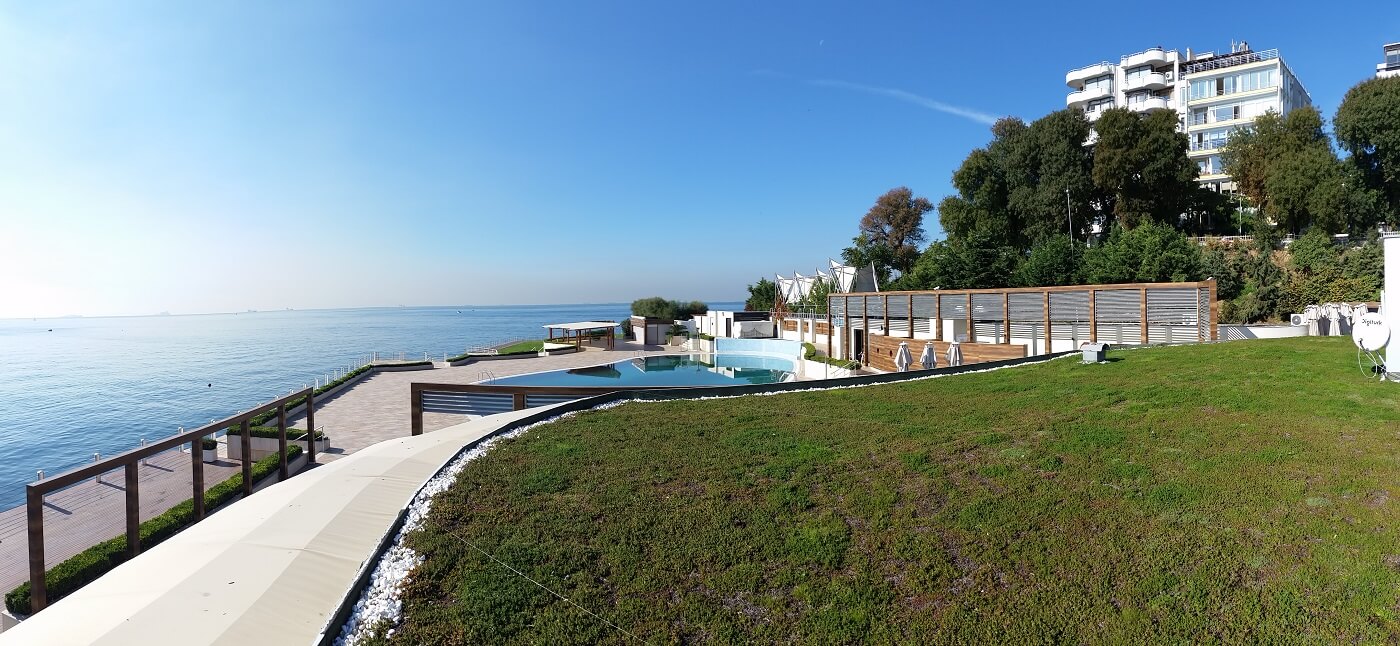NOV 27, 2015 /
Green roofs may come in an endless variety of shapes and sizes from high-rise public parks and lush rooftop gardens to tranquil urban spaces, but there is one critical factor that has a major impact on them all — weight.
Green roof weight can range from hundreds of tons for an ‘intensive’ green roof such as a small urban park or garden to just a couple of hundred kilos for a lightweight ‘extensive’ green roof system like Urbanscape featuring a lush mix of sedum vegetation.
What contributes to green roof weight?
The two key elements that contribute to weight are the density of the different layers that make up the green roof and how heavy it becomes as a result of rain absorption.
For example, a traditional ‘intensive’ green roof system for plants and grass — featuring at least six layers including soil, filter fleece, drainage layer and vegetation — is up to 12 cm thick and weighs around 100 kg/m2 dry and 150 kg/m2 fully soaked.
Compare that to Urbanscape. The green roof solution uses a unique lightweight growing media rather than soil and as a result is less than 8 cm thick and six times lighter than traditional systems weighing only 20 kg/m2 dry or 65 kg/m2 saturated.
So, what are the implications of these weighty issues?
As surface area increases, the weight of green roofs obviously increases proportionally. So, in dry state 50 m2 traditional green roof weighs around 5 tons while a similar-sized Urbanscape roof weighs just 1 ton.Scale this up and a 1,000 m2 traditional green roof space requires 100 tons of material to be brought on the roof and the Urbanscape version only 20 tons and can be called a light-weight green roof.
What is the impact of green roof weight on building structure?
A traditional green roof can exert a load of up to 250 kg per m2 and that inevitably means a strong building is required to support the weight.
In older buildings or new-build this may require costly structural reinforcement which in some cases may prove prohibitively expensive. The solution is simple. If the weight of the green roof is reduced the need for structural reinforcement is also reduced.
As mentioned, Sedum vegetated green roof designed by Urbanscape is six times lighter than traditional green roof systems. This lightness means most buildings have a comfortable load-bearing capacity that is sufficient and architects can even plan green roofs where it had not been possible before such as on lightweight metal constructions.
Photo 1: VIP Club in Instanbul, Turkey
How does weight impact installation costs?
Traditional green roofs usually involve detailed planning, tons of soil, lots of installation time and horticultural expertise… in other words, plenty of money.
With Urbanscape there are no complicated drainage systems or expensive roof preparations to install. Each element from the mineral wool growing layer to the root barrier membrane is light and easy to handle and no specialist knowledge is required to install it.
This means installation is effortless and efficient. When Urbanscape was installed on a 500 m2 residential complex in Germany, for example, it took just a day’s work of standard installation team to complete the entire system. That’s half the time it would have taken to install a traditional green roof.
How does weight impact on initial maintenance?
A traditional green roof with soil substrates are usually designed with plugs, cuttings or seeds which consequently require much care and attention in first years to reach good green coverage and diverse vegetation. This increases dramatically the cost in comparison to prevegetated green roofs. Naturally if building owners introduce plants, grass or shrubs, they also need to find money to employ someone to nurture their investment and ensure it is kept in peak condition.
Urbanscape’s vegetation layer is composed of a sedum mix grown by top sedum grower. This lightweight vegetative mix provides an instant oasis of green diversity from the minute it is installed.
Does a lightweight green roof mean less stormwater management?
As well as absorbing carbon dioxide and air pollutants, one of the most significant environmental contributions of green roofs is the retention of stormwater. This not only helps cool down hot buildings but also relieves stress on urban sewage systems.
Despite being only 6 to 8 cm thick, Urbanscape’s unique layer system has a water-holding capacity of 27 to 45 litres per m2 — a significant improvement on traditional green roofs whose 10 to 12 cm thickness retains between 25 and 35 litres.
Does green roof weight impact on biodiversity?
Green roofs can play an important role creating ecosystems in urbanised areas. They can improve air quality (it is estimated that a square metre of green roof can help absorb 0.2 kg of airborne particles from the air every year), clean run-off water and provide a habitat for pollinators and other wildlife.
Heavy or light, adding a green roof to a grey urbanised area is guaranteed to improve biodiversity. And guaranteed to look better than the grey of urban environment.
Would you like to learn more about Urbanscape® Green Cubes and Green Flocks?
Contact us via e-mail or download our Landscaping brochure and product data sheets below.
Subscribe to Email Updates
We’ll be sending you information and news about our solutions and material which we believe may be useful to you.
You can always unsubscribe from our newsletter.









